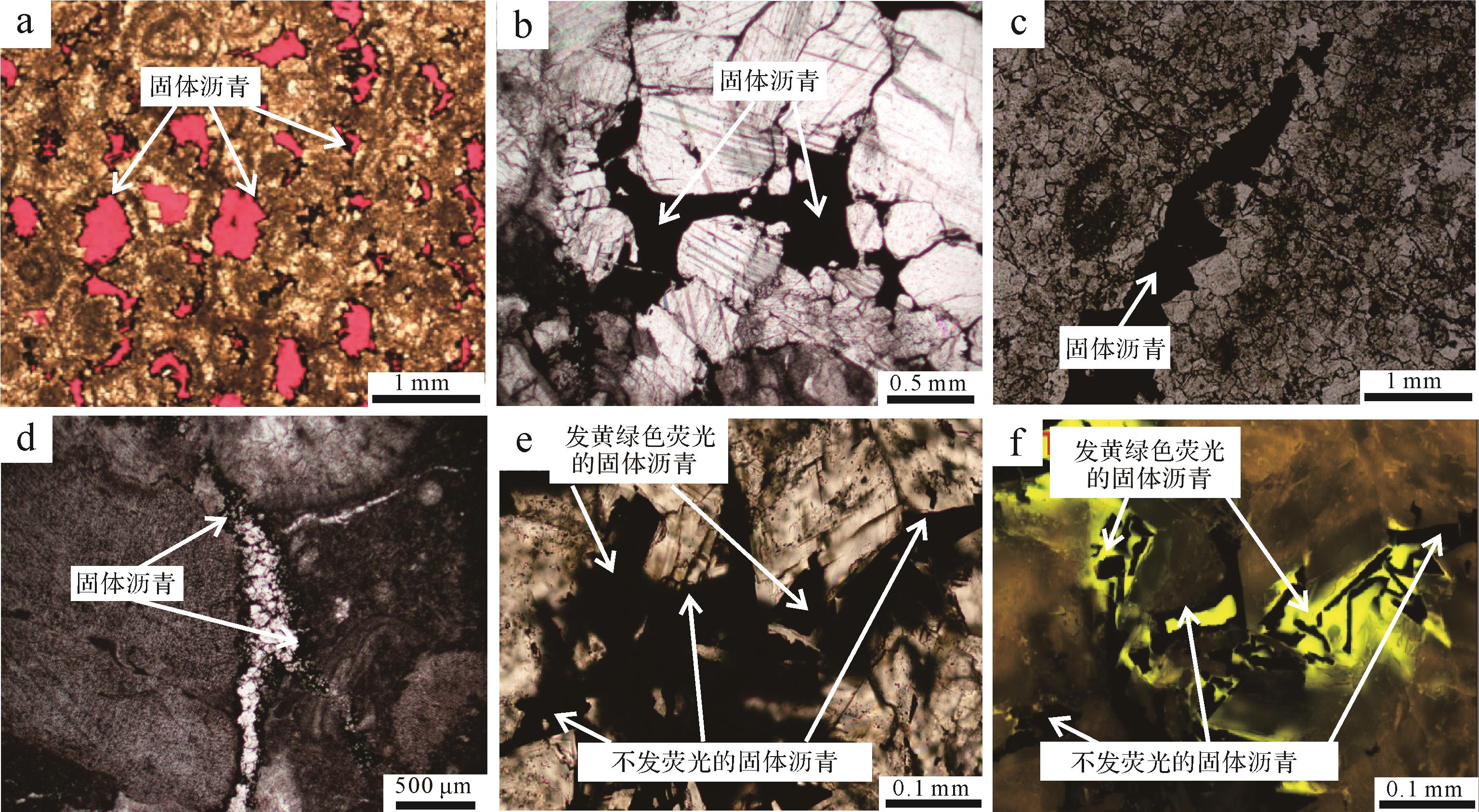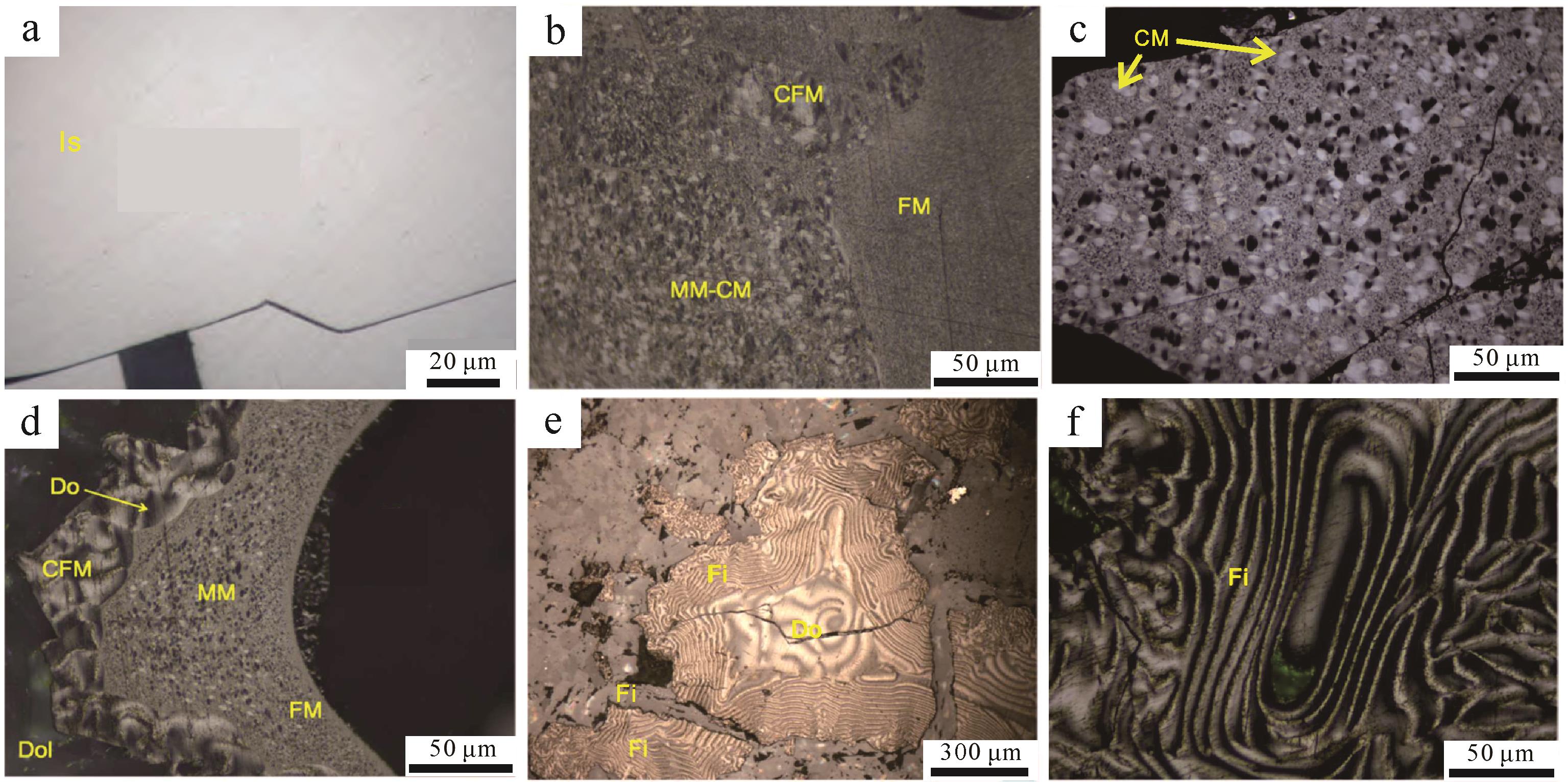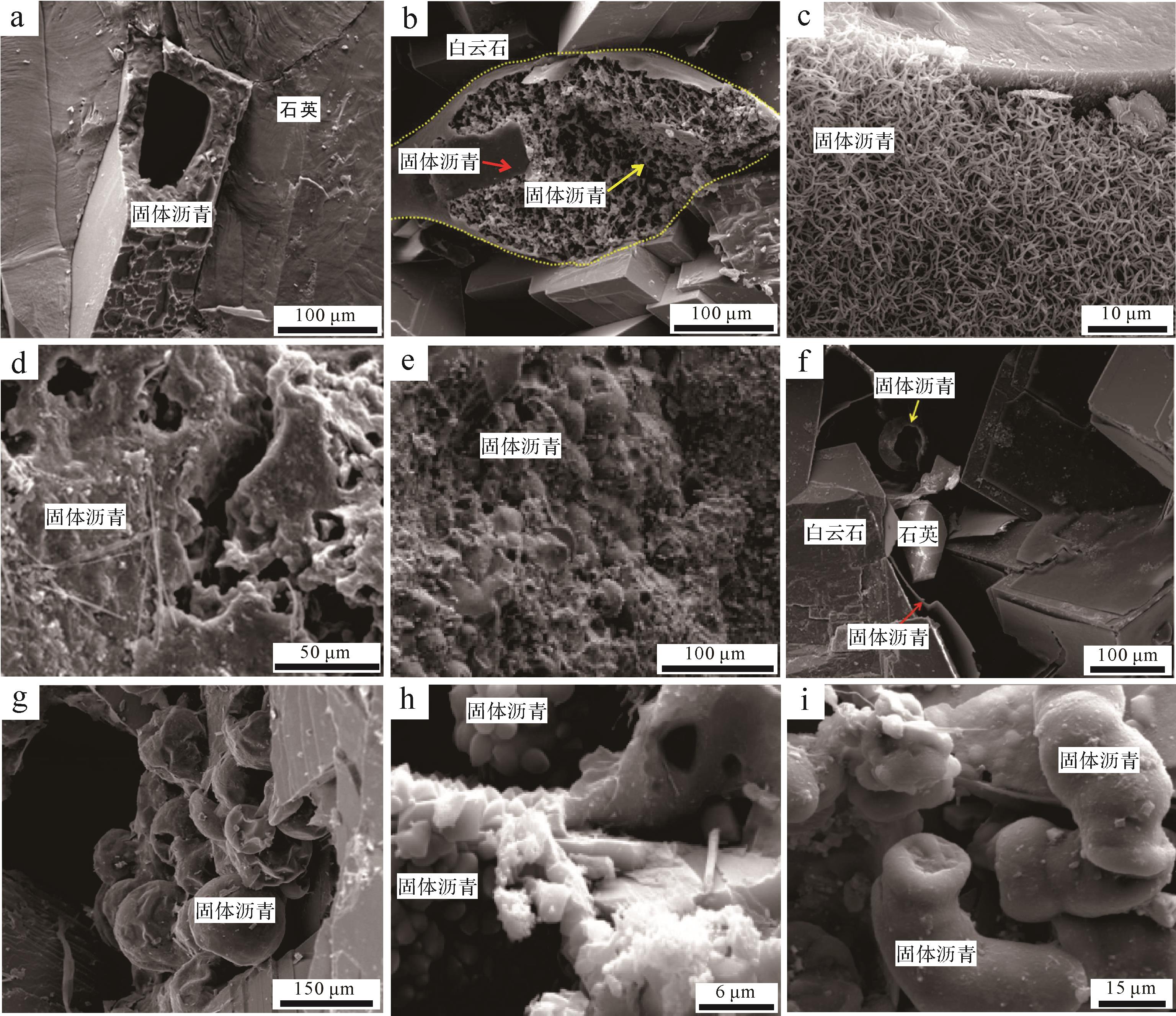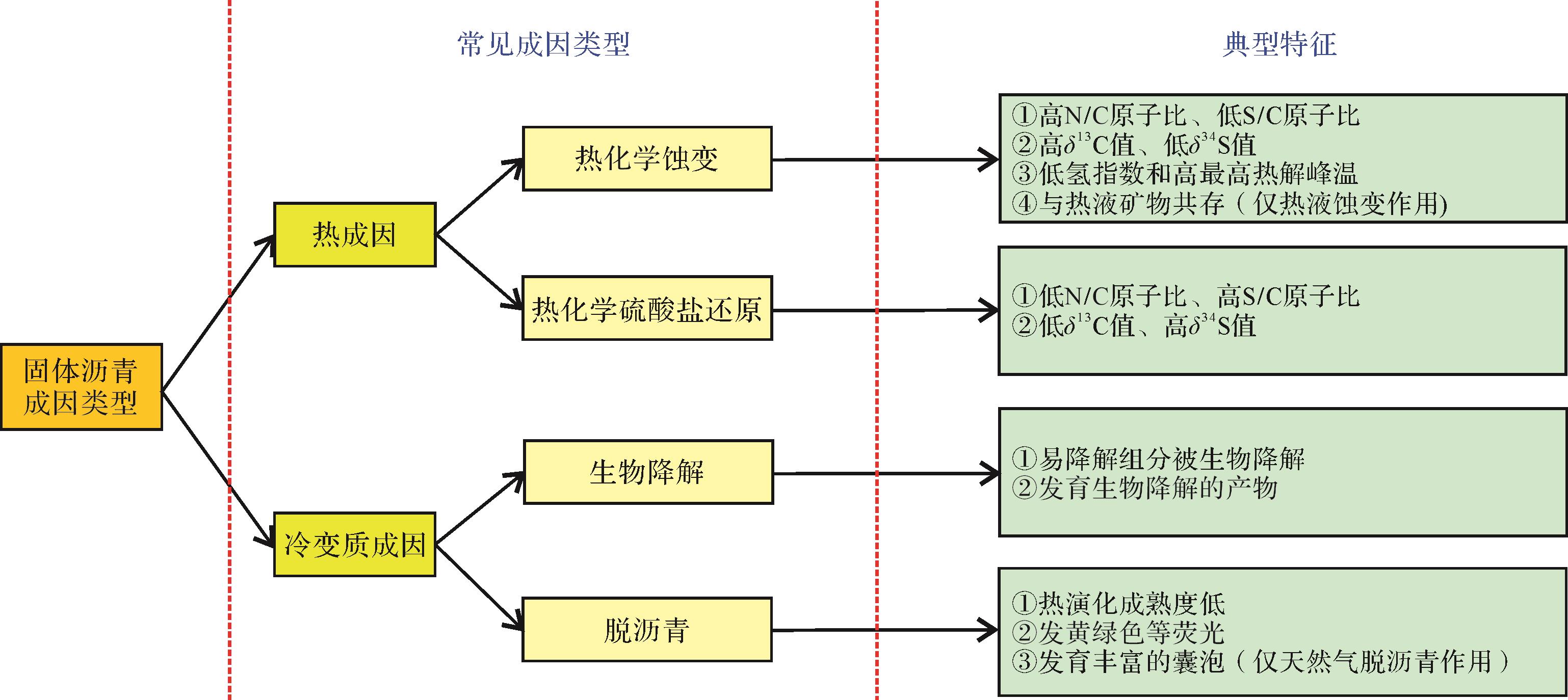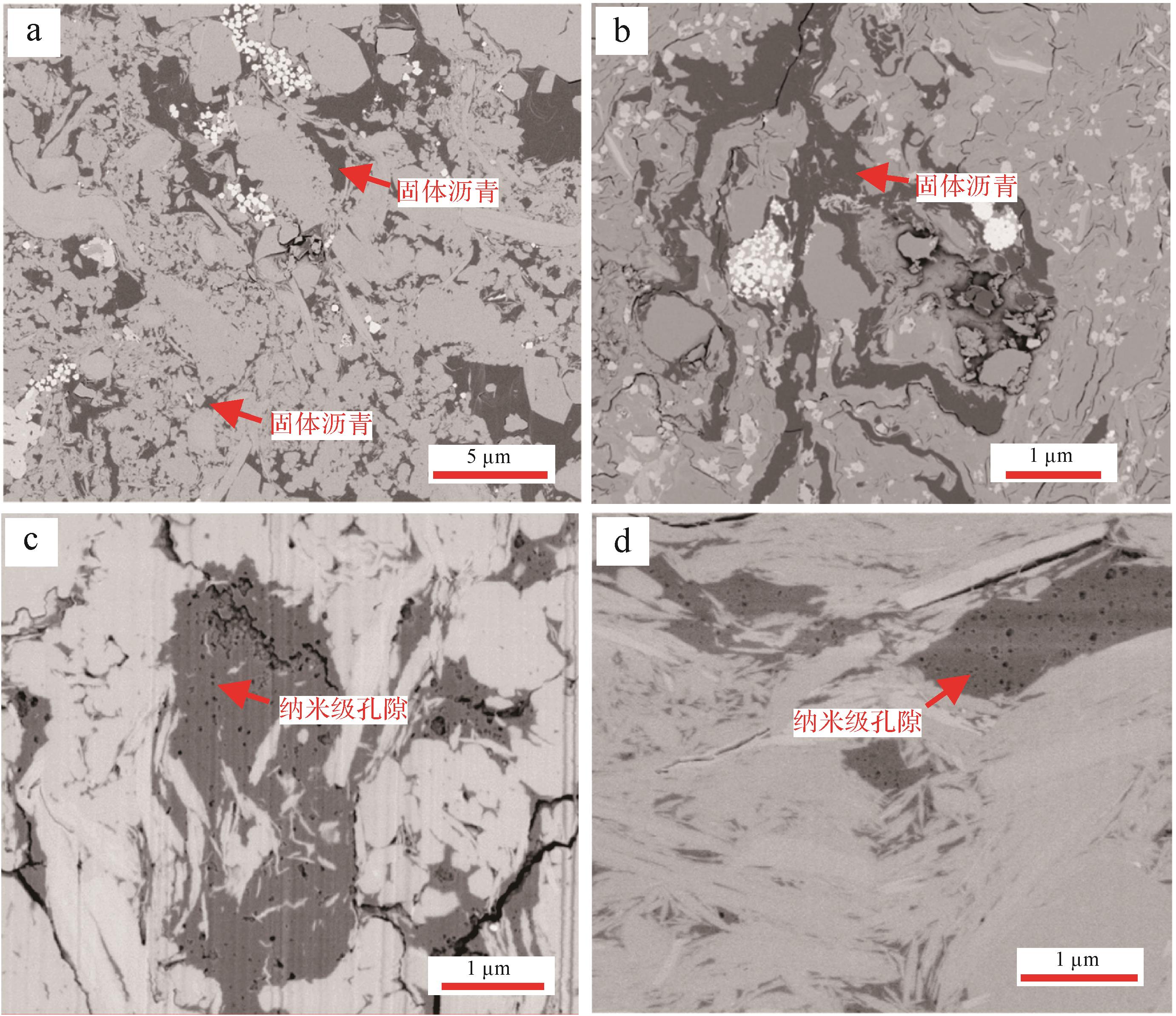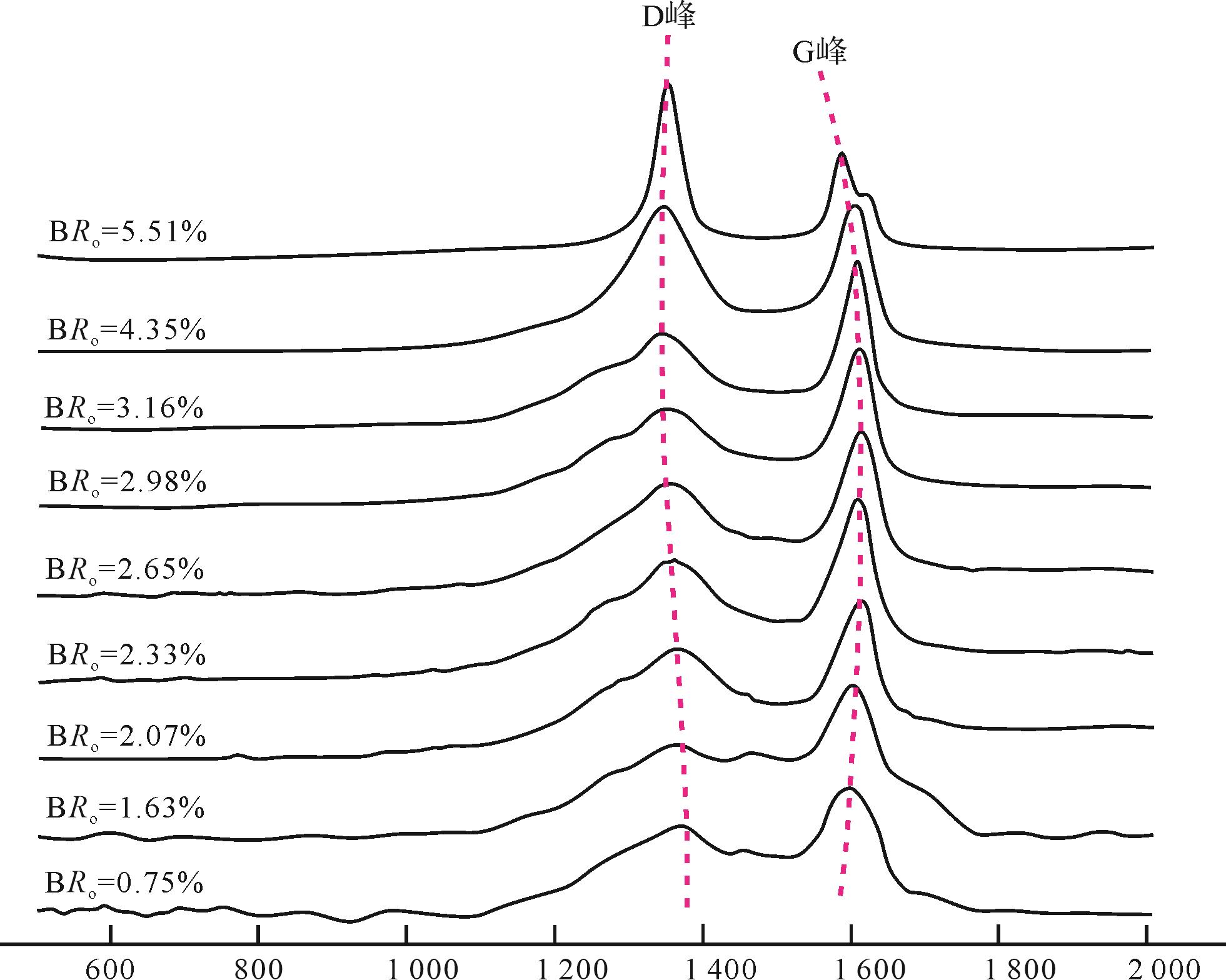|
[1]
|
Hwang R J, Teerman S C, Carlson R M. Geochemical comparison of reservoir solid bitumens with diverse origins[J]. Organic Geochemistry, 1998, 29(1/2/3): 505-517. |
|
[2]
|
Killops S, Killops V. Introduction to organic geochemistry[M]. 2nd ed. Malden: Blackwell Publishing, 2005: 1-406. |
|
[3]
|
Hunt J M. Petroleum geochemistry and geology[M]. 2nd ed. New York: W. H. Freeman, 1996: 1-743. |
|
[4]
|
Waliczek M, Machowski G, Więcław D, et al. Properties of solid bitumen and other organic matter from Oligocene shales of the Fore-Magura Unit in Polish Outer Carpathians: Microscopic and geochemical approach[J]. International Journal of Coal Geology, 2019, 210: 103206. |
|
[5]
|
Suárez-Ruiz I, Juliao T, Rodrigues S, et al. Optical parameters and microstructural properties of solid bitumens of high reflectance (Impsonites). Reflections on their use as an indicator of organic maturity[J]. International Journal of Coal Geology, 2020, 229: 103570. |
|
[6]
|
Chen Z H, Yang Y M, Wang T G, et al. Dibenzothiophenes in solid bitumens: Use of molecular markers to trace paleo-oil filling orientations in the lower Cambrian reservoir of the Moxi-Gaoshiti Bulge, Sichuan Basin, southern China[J]. Organic Geochemistry, 2017, 108: 94-112. |
|
[7]
|
王晔,邱楠生,马中良,等. 固体沥青反射率与镜质体反射率的等效关系评价[J]. 中国矿业大学学报,2020,49(3):563-575.
Wang Ye, Qiu Nansheng, Ma Zhongliang, et al. Evaluation of equivalent relationship between vitrinite reflectance and solid bitumen reflectance[J]. Journal of China University of Mining & Technology, 2020, 49(3): 563-575. |
|
[8]
|
肖贤明,周秦,程鹏,等. 高—过成熟海相页岩中矿物—有机质复合体(MOA)的显微激光拉曼光谱特征作为成熟度指标的意义[J]. 中国科学(D辑):地球科学,2020,50(9):1228-1241.
Xiao Xianming, Zhou Qin, Cheng Peng, et al. Thermal maturation as revealed by micro-Raman spectroscopy of mineral-organic aggregation (MOA) in marine shales with high and over maturities[J]. Science China (Seri. D): Earth Sciences, 2020, 50(9): 1228-1241. |
|
[9]
|
Rimmer S M, Crelling J C, Yoksoulian L E. An occurrence of coked bitumen, Raton Formation, Purgatoire River Valley, Colorado, U.S.A.[J]. International Journal of Coal Geology, 2015, 141-142: 63-73. |
|
[10]
|
Stasiuk L D. The origin of pyrobitumens in Upper Devonian Leduc Formation gas reservoirs, Alberta, Canada: An optical and EDS study of oil to gas transformation[J]. Marine and Petroleum Geology, 1997, 14(7/8): 915-929. |
|
[11]
|
Alkhafaji M W, Connan J, Engel M H, et al. Origin, biodegradation, and water washing of bitumen from the Mishraq sulfur mine, northern Iraq[J]. Marine and Petroleum Geology, 2021, 124: 104786. |
|
[12]
|
Misch D, Gross D, Hawranek G, et al. Solid bitumen in shales: Petrographic characteristics and implications for reservoir characte-rization[J]. International Journal of Coal Geology, 2019, 205: 14-31. |
|
[13]
|
田兴旺,胡国艺,李伟,等. 四川盆地乐山—龙女寺古隆起地区震旦系储层沥青地球化学特征及意义[J]. 天然气地球科学,2013,24(5):982-990.
Tian Xingwang, Hu Guoyi, Li Wei, et al. Geochemical characteristics and significance of Sinian reservoir bitumen in Leshan-Longnvsi paleo-uplift area, Sichuan Basin[J]. Natural Gas Geoscience, 2013, 24(5): 982-990. |
|
[14]
|
黄文明,徐邱康,刘树根,等. 中国海相层系油气成藏过程与储层沥青耦合关系:以四川盆地为例[J]. 地质科技情报,2015,34(6):159-168.
Huang Wenming, Xu Qiukang, Liu Shugen, et al. Coupling relationship between oil & gas accumulation process and reservoir bitumen of marine system: Taking Sichuan Basin as an example[J]. Geological Science and Technology Information, 2015, 34(6): 159-168. |
|
[15]
|
刘洛夫,赵建章,张水昌,等. 塔里木盆地志留系沥青砂岩的成因类型及特征[J]. 石油学报,2000,21(6):12-17.
Liu Luofu, Zhao Jianzhang, Zhang Shuichang, et al. Genetic types and characteristics of the Silurian asphaltic sandstones in Tarim Basin[J]. Acta Petrolei Sinica, 2000, 21(6): 12-17. |
|
[16]
|
陈强路,范明,尤东华. 塔里木盆地志留系沥青砂岩储集性非常规评价[J]. 石油学报,2006,27(1):30-33.
Chen Qianglu, Fan Ming, You Donghua. Non-traditional method for evaluating physical property of Silurian bitumen sandstone reservoirs in Tarim Basin[J]. Acta Petrolei Sinica, 2006, 27(1): 30-33. |
|
[17]
|
路俊刚,陈世加,王绪龙,等. 准东三台—北三台地区储层沥青和稠油特征与成因分析[J]. 中国石油大学学报(自然科学版),2011,35(5):27-31,50.
Lu Jungang, Chen Shijia, Wang Xulong, et al. Characteristics and origin analysis of viscous oil and reservoir bitumen in Santai-Beisantai area[J]. Journal of China University of Petroleum, 2011, 35(5): 27-31, 50. |
|
[18]
|
陈哲龙,柳广弟,曹正林,等. 储层沥青成因及其石油地质意义:以准噶尔盆地玛湖凹陷百口泉组为例[J]. 中国矿业大学学报,2018,47(2):391-399.
Chen Zhelong, Liu Guangdi, Cao Zhenglin, et al. Origin of solid bitumen and its significance to petroleum geology: A case study of Baikouquan Formation in Mahu Sag of Junggar Basin[J]. Journal of China University of Mining & Technology, 2018, 47(2): 391-399. |
|
[19]
|
张春林,孙粉锦,刘锐娥,等. 鄂尔多斯盆地南部奥陶系沥青及古油藏生气潜力[J]. 石油勘探与开发,2010,37(6):668-673.
Zhang Chunlin, Sun Fenjin, Liu Rui'e, et al. Bitumen and hydrocarbon generation potential of paleo-reservoirs in the Ordovician, south Ordos Basin[J]. Petroleum Exploration and Develop-ment, 2010, 37(6): 668-673. |
|
[20]
|
黄军平,林俊峰,张雷,等. 鄂尔多斯盆地下古生界—中元古界储层固体沥青地质特征及油气勘探意义[J]. 河南理工大学学报(自然科学版),2021,40(4):48-58.
Huang Junping, Lin Junfeng, Zhang Lei, et al. Geological characteristics and exploration significance of reservoir solid bitumen in the Lower Paleozoic-Middle Proterozoic in Ordos Basin[J]. Journal of Henan Polytechnic University (Natural Science), 2021, 40(4): 48-58. |
|
[21]
|
Gonçalves P A, Filho J G M, da Silva F S, et al. Solid bitumen occurrences in the Arruda sub-basin (Lusitanian Basin, Portugal): Petrographic features[J]. International Journal of Coal Geology, 2014, 131: 239-249. |
|
[22]
|
Wang G W, Li P P, Hao F, et al. Impact of sedimentology, diagenesis, and solid bitumen on the development of a tight gas grainstone reservoir in the Feixianguan Formation, Jiannan area, China: Implications for gas exploration in tight carbonate reservoirs[J]. Marine and Petroleum Geology, 2015, 64: 250-265. |
|
[23]
|
Liu Y K, Xiong Y Q, Li Y, et al. Effect of thermal maturation on chemical structure and nanomechanical properties of solid bitumen[J]. Marine and Petroleum Geology, 2018, 92: 780-793. |
|
[24]
|
Mastalerz M, Drobniak A, Stankiewicz A B. Origin, properties, and implications of solid bitumen in source-rock reservoirs: A review[J]. International Journal of Coal Geology, 2018, 195: 14-36. |
|
[25]
|
Li Y, Chen S J, Wang Y X, et al. Relationships between hydrocarbon evolution and the geochemistry of solid bitumen in the Guanwushan Formation, NW Sichuan Basin[J]. Marine and Petroleum Geology, 2020, 111: 116-134. |
|
[26]
|
Wu L L, Liao Y H, Fang Y X, et al. The study on the source of the oil seeps and bitumens in the Tianjingshan structure of the northern Longmen Mountain structure of Sichuan Basin, China[J]. Marine and Petroleum Geology, 2012, 37(1): 147-161. |
|
[27]
|
Cheng B, Wang T G, Chen Z H, et al. Biodegradation and possible source of Silurian and Carboniferous reservoir bitumens from the Halahatang sub-depression, Tarim Basin, NW China[J]. Marine and Petroleum Geology, 2016, 78: 236-246. |
|
[28]
|
Cai C F, Xiang L, Yuan Y Y, et al. Sulfur and carbon isotopic compositions of the Permian to Triassic TSR and non-TSR altered solid bitumen and its parent source rock in NE Sichuan Basin[J]. Organic Geochemistry, 2017, 105: 1-12. |
|
[29]
|
Zhu L Q, Liu G D, Song Z Z, et al. Reservoir solid bitumen-source rock correlation using the trace and rare earth elements:Implications for identifying the natural gas source of the Ediacaran-lower Cambrian reservoirs, central Sichuan Basin[J]. Marine and Petroleum Geology, 2022, 137: 105499. |
|
[30]
|
Landis C R, Castaño J R. Maturation and bulk chemical properties of a suite of solid hydrocarbons[J]. Organic Geochemistry, 1995, 22(1): 137-149. |
|
[31]
|
左兆喜,曹剑,胡文瑄,等. 高演化有机质的芳烃成熟度表征:基于焦沥青反射率和拉曼参数的优选[J]. 中国科学(D辑):地球科学,2022,52(12):2454-2478.
Zuo Zhaoxi, Cao Jian, Hu Wenxuan, et al. Characterizing the maturity of highly evolved organic matter based on aromatic hydrocarbons and optimization with pyrobitumen reflectance and Raman spectral parameters[J]. Science China (Seri. D): Earth Sciences, 2022, 52(12): 2454-2478. |
|
[32]
|
Bertrand R. Standardization of solid bitumen reflectance to vitrinite in some Paleozoic sequences of Canada[J]. Energy Sources, 1993, 15(2): 269-287. |
|
[33]
|
Bertrand R, Malo M. Source rock analysis, thermal maturation and hydrocarbon generation in Siluro-Devonian rocks of the Gaspé Belt Basin, Canada[J]. Bulletin of Canadian Petroleum Geology, 2001, 49(2): 238-261. |
|
[34]
|
Henry D G, Jarvis I, Gillmore G, et al. A rapid method for determining organic matter maturity using Raman spectroscopy: Application to Carboniferous organic-rich mudstones and coals[J]. International Journal of Coal Geology, 2019, 203: 87-98. |
|
[35]
|
刘强,柳少波,鲁雪松,等. 拉曼光谱在油气地质应用中的研究进展[J]. 光谱学与光谱分析,2022,42(9):2679-2688.
Liu Qiang, Liu Shaobo, Lu Xuesong, et al. Research progress in the application of Raman spectroscopy in petroleum geology[J]. Spectroscopy and Spectral Analysis, 2022, 42(9): 2679-2688. |
|
[36]
|
王飞宇,师玉雷,曾花森,等. 利用油包裹体丰度识别古油藏和限定成藏方式[J]. 矿物岩石地球化学通报,2006,25(1):12-18.
Wang Feiyu, Shi Yulei, Zeng Huasen, et al. To identify paleo-oil reservoir and to constrain petroleum charging model using the abundance of oil inclusions[J]. Bulletin of Mineralogy, Petrology and Geochemistry, 2006, 25(1): 12-18. |
|
[37]
|
Li P P, Hao F, Zhang B Q, et al. Heterogeneous distribution of pyrobitumen attributable to oil cracking and its effect on carbonate reservoirs: Feixianguan Formation in the Jiannan gas field, China[J]. AAPG Bulletin, 2015, 99(4): 763-789. |
|
[38]
|
Li P P, Li T, Zou H Y, et al. Heterogeneous distribution and potential significance of solid bitumen in paleo-oil reservoirs: Evidence from oil cracking experiments and geological observations[J]. Journal of Petroleum Science and Engineering, 2022, 208: 109340. |
|
[39]
|
Zhao B S, Li R X, Qin X L, et al. Biomarkers and Re-Os geochronology of solid bitumen in the Beiba dome, northern Sichuan Basin, China: Implications for solid bitumen origin and petroleum system evolution[J]. Marine and Petroleum Geology, 2021, 126: 104916. |
|
[40]
|
Yao L P, Zhong N N, Khan I, et al. Comparison of in-source solid bitumen with migrated solid bitumen from Ediacaran-Cambrian rocks in the Upper Yangtze region, China[J]. International Journal of Coal Geology, 2021, 240: 103748. |
|
[41]
|
余新亚,李平平,邹华耀,等. 川东北长兴组:飞仙关组古原油成藏的孔隙度门限[J]. 地质学报,2014,88(11):2131-2140.
Yu Xinya, Li Pingping, Zou Huayao, et al. Porosity threshold for paleo-oil accumulation of Changxing: Feixianguan Formations in the northeastern Sichuan Basin[J]. Acta Geologica Sinica, 2014, 88(11): 2131-2140. |
|
[42]
|
Shi C H, Cao J, Tan X C, et al. Discovery of oil bitumen co-existing with solid bitumen in the lower Cambrian Longwangmiao giant gas reservoir, Sichuan Basin, southwestern China: Implications for hydrocarbon accumulation process[J]. Organic Geochemistry, 2017, 108: 61-81. |
|
[43]
|
Gao P, Liu G D, Lash G G, et al. Occurrences and origin of reservoir solid bitumen in Sinian Dengying Formation dolomites of the Sichuan Basin, SW China[J]. International Journal of Coal Geology, 2018, 200: 135-152. |
|
[44]
|
李胜勇,傅恒,李仲东,等. 川东北地区长兴组—飞仙关组固体沥青的形貌特征与成因分析[J]. 沉积与特提斯地质,2011,31(1):72-79.
Li Shengyong, Fu Heng, Li Zhongdong, et al. Morphology and genesis of the solid bitumen from the Changxing Formation-Feixianguan Formation in northeastern Sichuan[J]. Sedimentary Geology and Tethyan Geology, 2011, 31(1): 72-79. |
|
[45]
|
Ragan S, Marsh H. Carbonization and liquid-crystal (mesophase) development. 22. Micro-strength and optical textures of cokes from coal-pitch co-carbonizations[J]. Fuel, 1981, 60(6): 522-528. |
|
[46]
|
Nandi B N, Belinko K, Ciavaglia L A, et al. Formation of coke during thermal hydrocracking of Athabasca bitumen[J]. Fuel, 1978, 57(5): 265-268. |
|
[47]
|
Brooks J D, Taylor G H. Formation of graphitizing carbons from the liquid phase[J]. Nature, 1965, 206(4985): 697-699. |
|
[48]
|
White J L. Mesophase mechanisms in the formation of the microstructure of petroleum coke[M]//Deviney M L, O’Grady T M. Petroleum derived carbons. Washington: American Chemical Society, 1976: 282-314. |
|
[49]
|
Khavari-Khorosani G, Murchison D G. Thermally metamorphosed bitumen from Windy Knoll, Derbyshire, England[J]. Chemical Geology, 1978, 22: 91-105. |
|
[50]
|
Creaney S, Jones J M, Holliday D W, et al. The occurrence of bitumen in the Great Limestone around Matfen, Northumberland–its characterisation and possible genesis[J]. Proceedings of the Yorkshire Geological Society, 1980, 43(1): 69-79. |
|
[51]
|
Goodarzi F, Stasiuk L D. Thermal alteration of gilsonite due to bushfire, an example from southwest Iran[J]. International Journal of Coal Geology, 1991, 17(3/4): 333-342. |
|
[52]
|
Wilson N S F. Organic petrology, chemical composition, and reflectance of pyrobitumen from the El Soldado Cu deposit, Chile[J]. International Journal of Coal Geology, 2000, 43(1/2/3/4): 53-82. |
|
[53]
|
Zhang P W, Liu G D, Cai C F, et al. Alteration of solid bitumen by hydrothermal heating and thermochemical sulfate reduction in the Ediacaran and Cambrian dolomite reservoirs in the central Sichuan Basin, SW China[J]. Precambrian Research, 2019, 321: 277-302. |
|
[54]
|
Rahman M W, Rimmer S M, Rowe H D. The impact of rapid heating by intrusion on the geochemistry and petrography of coals and organic-rich shales in the Illinois Basin[J]. International Journal of Coal Geology, 2018, 187: 45-53. |
|
[55]
|
Liu S G, Li Z Q, Deng B, et al. Occurrence morphology of bitumen in Dengying Formation deep and ultra-deep carbonate reservoirs of the Sichuan Basin and its indicating significance to oil and gas reservoirs[J]. Natural Gas Industry B, 2022, 9(1): 73-83. |
|
[56]
|
李勇,陈世加,尹相东,等. 储层中固体沥青研究现状、地质意义及其发展趋势[J]. 吉林大学学报(地球科学版),2020,50(3):732-746.
Li Yong, Chen Shijia, Yin Xiangdong, et al. Research status, geological significance and development trend of solid bitumen in reservoirs[J]. Journal of Jilin University (Earth Science Edition), 2020, 50(3): 732-746. |
|
[57]
|
Huc A Y, Nederlof P, Debarre R, et al. Pyrobitumen occurrence and formation in a Cambro-Ordovician sandstone reservoir, Fahud Salt Basin, North Oman[J]. Chemical Geology, 2000, 168(1/2): 99-112. |
|
[58]
|
Schoenherr J, Littke R, Urai J L, et al. Polyphase thermal evolution in the Infra-Cambrian Ara Group (South Oman Salt Basin) as deduced by maturity of solid reservoir bitumen[J]. Organic Geochemistry, 2007, 38(8): 1293-1318. |
|
[59]
|
Horsfield B, Schenk H J, Mills N, et al. An investigation of the in-reservoir conversion of oil to gas: Compositional and kinetic findings from closed-system programmed-temperature pyrolysis[J]. Organic Geochemistry, 1992, 19(1/2/3): 191-204. |
|
[60]
|
Dahl J E, Moldowan J M, Peters K E, et al. Diamondoid hydrocarbons as indicators of natural oil cracking[J]. Nature, 1999, 399(6731): 54-57. |
|
[61]
|
Isaksen G H. Central North Sea hydrocarbon systems: Generation, migration, entrapment, and thermal degradation of oil and gas[J]. AAPG Bulletin, 2004, 88(11): 1545-1572. |
|
[62]
|
Kelemen S R, Walters C C, Kwiatek P J, et al. Distinguishing solid bitumens formed by thermochemical sulfate reduction and thermal chemical alteration[J]. Organic Geochemistry, 2008, 39(8): 1137-1143. |
|
[63]
|
Kelemen S R, Walters C C, Kwiatek P J, et al. Characterization of solid bitumens originating from thermal chemical alteration and thermochemical sulfate reduction[J]. Geochimica et Cosmochimica Acta, 2010, 74(18): 5305-5332. |
|
[64]
|
Cai C F, Li K K, Zhu Y M, et al. TSR origin of sulfur in Permian and Triassic reservoir bitumen, east Sichuan Basin, China[J]. Organic Geochemistry, 2010, 41(9): 871-878. |
|
[65]
|
Blanc P, Connan J. Preservation, degradation, and destruction of trapped oil[C]//Magoon L B, Dow W G. The petroleum system-from source to trap. Tulsa: American Association of Petroleum Geologists, 1994, 60: 237-247. |
|
[66]
|
King H E, Walters C C, Horn W C, et al. Sulfur isotope analysis of bitumen and pyrite associated with thermal sulfate reduction in reservoir carbonates at the Big Piney-La Barge production complex[J]. Geochimica et Cosmochimica Acta, 2014, 134: 210-220. |
|
[67]
|
Manzano B K, Fowler M G, Machel H G. The influence of thermochemical sulphate reduction on hydrocarbon composition in Nisku reservoirs, Brazeau river area, Alberta, Canada[J]. Organic Geochemistry, 1997, 27(7/8): 507-521. |
|
[68]
|
Powell T G, Macqueen R W. Precipitation of sulfide ores and organic matter: Sulfate reactions at Pine Point, Canada[J]. Science, 1984, 224(4644): 63-66. |
|
[69]
|
Machel H G, Krouse H R, Sassen R. Products and distinguishing criteria of bacterial and thermochemical sulfate reduction[J]. Applied Geochemistry, 1995, 10(4): 373-389. |
|
[70]
|
Sachsenhofer R F, Gratzer R, Tschelaut W, et al. Characterisation of non-producible oil in Eocene reservoir sandstones (Bad Hall Nord field, Alpine Foreland Basin, Austria)[J]. Marine and Petroleum Geology, 2006, 23(1): 1-15. |
|
[71]
|
Shalaby M R, Hakimi M H, Abdullah W H. Geochemical characterization of solid bitumen (migrabitumen) in the Jurassic sandstone reservoir of the Tut field, Shushan Basin, northern western desert of Egypt[J]. International Journal of Coal Geology, 2012, 100: 26-39. |
|
[72]
|
Wilhelms A, Larter S R. Origin of tar mats in petroleum reservoirs. Part II: Formation mechanisms for tar mats[J]. Marine and Petroleum Geology, 1994, 11(4): 442-456. |
|
[73]
|
Lomando A J. The influence of solid reservoir bitumen on reservoir quality[J]. AAPG Bulletin, 1992, 76(8): 1137-1152. |
|
[74]
|
Rogers M A, McAlary J D, Bailey N J L. Significance of reservoir bitumens to thermal-maturation studies, western Canada Basin[J]. AAPG Bulletin, 1974, 58(9): 1806-1824. |
|
[75]
|
Jacob H. Nomenclature, classification, characterization, and genesis of natural solid bitumen (migrabitumen)[M]//Parnell J, Kucha H, Landais P. Bitumens in ore deposits. Berlin Heidelberg: Springer, 1993: 11-27. |
|
[76]
|
Volkman J K, Alexander R, Kagi R I, et al. Biodegradation of aromatic hydrocarbons in crude oils from the Barrow sub-basin of western Australia[J]. Organic Geochemistry, 1984, 6: 619-632. |
|
[77]
|
Miiller D E, Holba A G, Hughes W B. Effects of biodegradation on crude oils[M]//Meyer R F. Exploration for heavy crude oil and natural bitumen. Tulsa: American Association of Petroleum Geologists, 1987: 233-241. |
|
[78]
|
Peters K E, Walters C C, Moldowan J M. The biomarker guide, volume 2, biomarkers and isotopes in petroleum exploration and earth history[M]. 2nd ed. New York: Cambridge University Press, 2005: 608-647. |
|
[79]
|
Curiale J A. Origin of solid bitumens, with emphasis on biological marker results[J]. Organic Geochemistry, 1986, 10(1/2/3): 559-580. |
|
[80]
|
Head I M, Jones D M, Larter S R. Biological activity in the deep subsurface and the origin of heavy oil[J]. Nature, 2003, 426(6964): 344-352. |
|
[81]
|
Curiale J A, Harrison W E. Correlation of oil and asphaltite in Ouachita Mountain region of Oklahoma: Geologic notes[J]. AAPG Bulletin, 1981, 65(11): 2426-2432. |
|
[82]
|
Huang H P, Li J. Molecular composition assessment of biodegradation influence at extreme levels:A case study from oilsand bitumen in the Junggar Basin, NW China[J]. Organic Geochemistry, 2017, 103: 31-42. |
|
[83]
|
Xiao X M, Wang F, Wilkins R W T, et al. Origin and gas potential of pyrobitumen in the Upper Proterozoic strata from the middle paleo-uplift of the Sichuan Basin, China[J]. International Journal of Coal Geology, 2007, 70(1/2/3): 264-276. |
|
[84]
|
Cardott B J, Landis C R, Curtis M E. Post-oil solid bitumen network in the Woodford Shale, USA:A potential primary migration pathway[J]. International Journal of Coal Geology, 2015, 139: 106-113. |
|
[85]
|
Zhou Q, Xiao X M, Pan L, et al. The relationship between micro-Raman spectral parameters and reflectance of solid bitumen[J]. International Journal of Coal Geology, 2014, 121: 19-25. |
|
[86]
|
Lohr C D, Hackley P C. Relating Tmax and hydrogen index to vitrinite and solid bitumen reflectance in hydrous pyrolysis residues: Comparisons to natural thermal indices[J]. International Journal of Coal Geology, 2021, 242: 103768. |
|
[87]
|
Gao G, Ren J L, Yang S R, et al. Characteristics and origin of solid bitumen in glutenites: A case study from the Baikouquan Formation reservoirs of the Mahu Sag in the Junggar Basin, China[J]. Energy & Fuels, 2017, 31(12): 13179-13189. |
|
[88]
|
Cheng B, Chen Z H, Chen T, et al. Biomarker signatures of the Ediacaran–early Cambrian origin petroleum from the central Sichuan Basin, South China: Implications for source rock characte-ristics[J]. Marine and Petroleum Geology, 2018, 96: 577-590. |
|
[89]
|
Shi C H, Cao J, Luo B, et al. Major elements trace hydrocarbon sources in over-mature petroleum systems: Insights from the Sinian Sichuan Basin, China[J]. Precambrian Research, 2020, 343: 105726. |
|
[90]
|
吴小奇,陈迎宾,翟常博,等. 川西坳陷中三叠统雷口坡组沥青地球化学特征及气源示踪[J]. 石油与天然气地质,2022,43(2):407-418.
Wu Xiaoqi, Chen Yingbin, Zhai Changbo, et al. Geochemical characteristics of bitumen and tracing of gas source in the Middle Triassic Leikoupo Formation, western Sichuan Depression[J]. Oil & Gas Geology, 2022, 43(2): 407-418. |
|
[91]
|
柳广第. 石油地质学[M]. 4版. 北京:石油工业出版社,2009:252-258.
Liu Guangdi. Petroleum geology[M]. 4th ed. Beijing: Petroleum Industry Press, 2009: 252-258. |
|
[92]
|
Löhr S C, Baruch E T, Hall P A, et al. Is organic pore development in gas shales influenced by the primary porosity and structure of thermally immature organic matter?[J]. Organic Geochemistry, 2015, 87: 119-132. |
|
[93]
|
Ungerer P, Behar E, Discamps D. Tentative calculation of the overall volume expansion of organic matter during hydrocarbon genesis from geochemistry data. Implications for primary migration[M]//Bjoröy M. Advances in organic geochemistry. Chichester: John Wiley, 1981: 129-135. |
|
[94]
|
Lewan M D. Petrographic study of primary petroleum migration in the Woodford Shale and related rock units[C]//Proceedings of the IFP exploration research conference. Paris: Technip, 1987: 113-130. |
|
[95]
|
Curtis M E, Cardott B J, Sondergeld C H, et al. Development of organic porosity in the Woodford Shale with increasing thermal maturity[J]. International Journal of Coal Geology, 2012, 103: 26-31. |
|
[96]
|
Reed R M, Loucks R, Milliken K L. Heterogeneity of shape and microscale spatial distribution in organic-matter-hosted pores of gas shales[C]//Proceedings of 2012 AAPG annual convention and exhibition. Long Beach: AAPG, 2012: 1236631. |
|
[97]
|
Lisk M, O’Brien G W, Eadington P J. Quantitative evaluation of the oil-leg potential in the Oliver gas field, Timor Sea, Australia[J]. AAPG Bulletin, 2002, 86(9): 1531-1542. |
|
[98]
|
Liu K Y, Eadington P, Middleton H, et al. Applying quantitative fluorescence techniques to investigate petroleum charge history of sedimentary basins in Australia and Papuan New Guinea[J]. Journal of Petroleum Science and Engineering, 2007, 57(1/2): 139-151. |
|
[99]
|
Tissot B P, Welte D H. Petroleum formation and occurrence[M]. 2nd ed. Berlin: Springer-Verlag Press, 1984. |
|
[100]
|
崔洁珺. 海相烃源岩镜状体反射率测定方法在塔东地区的应用[J]. 大庆石油地质与开发,2016,35(6):33-36.
Cui Jiejun. Application of the vitrinite-like maceral reflectance measuring method for the marine hydrocarbon source rocks in east Tarim[J]. Petroleum Geology and Oilfield Development in Daqing, 2016, 35(6): 33-36. |
|
[101]
|
Jacob H. Classification, structure, genesis and practical importance of natural solid oil bitumen (“migrabitumen”)[J]. International Journal of Coal Geology, 1989, 11(1): 65-79. |
|
[102]
|
Valentine B J, Hackley P C, Enomoto C B, et al. Reprint of “Organic petrology of the Aptian-age section in the downdip Mississippi Interior Salt Basin, Mississippi, USA: Observations and preliminary implications for thermal maturation history”[J]. International Journal of Coal Geology, 2014, 136: 38-51. |
|
[103]
|
Wei L, Wang Y Z, Mastalerz M. Comparative optical properties of macerals and statistical evaluation of mis-identification of vitrinite and solid bitumen from early mature Middle Devonian-Lower Mississippian New Albany Shale: Implications for thermal maturity assessment[J]. International Journal of Coal Geology, 2016, 168: 222-236. |
|
[104]
|
Petersen H I, Schovsbo N H, Nielsen A T. Reflectance measurements of zooclasts and solid bitumen in Lower Paleozoic shales, southern Scandinavia: Correlation to vitrinite reflectance[J]. International Journal of Coal Geology, 2013, 114: 1-18. |
|
[105]
|
Kus J, Khanaqa P, Mohialdeen I M J, et al. Solid bitumen, bituminite and thermal maturity of the Upper Jurassic-Lower Cretaceous Chia Gara Formation, Kirkuk oil field, Zagros Fold Belt, Kurdistan, Iraq[J]. International Journal of Coal Geology, 2016, 165: 28-48. |
|
[106]
|
王茂林,肖贤明,魏强,等. 页岩中固体沥青拉曼光谱参数作为成熟度指标的意义[J]. 天然气地球科学,2015,26(9):1712-1718.
Wang Maolin, Xiao Xianming, Wei Qiang, et al. Thermal maturation of solid bitumen in shale as revealed by Raman spectroscopy[J]. Natural Gas Geoscience, 2015, 26(9): 1712-1718. |
|
[107]
|
Henry D G, Jarvis I, Gillmore G, et al. Raman spectroscopy as a tool to determine the thermal maturity of organic matter: Application to sedimentary, metamorphic and structural geology[J]. Earth-Science Reviews, 2019, 198: 102936. |
|
[108]
|
Zhang Y L, Li Z S. Raman spectroscopic study of chemical structure and thermal maturity of vitrinite from a suite of Australia coals[J]. Fuel, 2019, 241: 188-198. |
|
[109]
|
刘德汉,肖贤明,田辉,等. 固体有机质拉曼光谱参数计算样品热演化程度的方法与地质应用[J]. 科学通报,2013,58(13):1228-1241.
Liu Dehan, Xiao Xianming, Tian Hui, et al. Sample maturation calculated using Raman spectroscopic parameters for solid organics: Methodology and geological applications[J]. China Science Bulletin, 2013, 58(13): 1228-1241. |
|
[110]
|
郝彬,胡素云,黄士鹏,等. 四川盆地磨溪地区龙王庙组储层沥青的地球化学特征及其意义[J]. 现代地质,2016,30(3):614-626.
Hao Bin, Hu Suyun, Huang Shipeng, et al. Geochemical characteristics and its significance of reservoir bitumen of Longwangmiao Formation in Moxi area, Sichuan Basin[J]. Geoscience, 2016, 30(3): 614-626. |
|
[111]
|
Chen Z H, Simoneit B R T, Wang T G, et al. Molecular markers, carbon isotopes, and rare earth elements of highly mature reservoir pyrobitumens from Sichuan Basin, southwestern China: Implications for PreCambrian-lower Cambrian petroleum systems[J]. Precambrian Research, 2018, 317: 33-56. |
|
[112]
|
Sackett W M. Carbon and hydrogen isotope effects during the thermocatalytic production of hydrocarbons in laboratory simulation experiments[J]. Geochimica et Cosmochimica Acta, 1978, 42(6): 571-580. |
|
[113]
|
Peters K E, Rohrback B G, Kaplan I R. Carbon and hydrogen stable isotope variations in kerogen during laboratory-simulated thermal maturation[J]. AAPG Bulletin, 1981, 65(3): 501-508. |
|
[114]
|
Xiong Y Q, Jiang W M, Wang X T, et al. Formation and evolution of solid bitumen during oil cracking[J]. Marine and Petroleum Geology, 2016, 78: 70-75. |
|
[115]
|
Fang X Y, Geng A S, Liang X, et al. Comparison of the Ediacaran and Cambrian petroleum systems in the Tianjingshan and the Micangshan uplifts, northern Sichuan Basin, China[J]. Marine and Petroleum Geology, 2022, 145: 105876. |
|
[116]
|
Hao F, Zhou X H, Zhu Y M, et al. Mechanisms of petroleum accumulation in the Bozhong sub-basin, Bohai Bay Basin, China. Part 1: Origin and occurrence of crude oils[J]. Marine and Petroleum Geology, 2009, 26(8): 1528-1542. |
|
[117]
|
Hao F, Zhou X H, Zhu Y M, et al. Lacustrine source rock deposition in response to co-evolution of environments and organisms controlled by tectonic subsidence and climate, Bohai Bay Basin, China[J]. Organic Geochemistry, 2011, 42(4): 323-339. |
|
[118]
|
Wang Q, Hao F, Xu C G, et al. Geochemical characterization of QHD29 oils on the eastern margin of Shijiutuo uplift, Bohai Sea, China: Insights from biomarker and stable carbon isotope analysis[J]. Marine and Petroleum Geology, 2015, 64: 266-275. |
|
[119]
|
Li C Z, Xu F H, Huang X B, et al. Migration directions of crude oils from multiple source rock intervals based on biomarkers: A case study of Neogene reservoirs in the Bodong Sag, Bohai Bay Basin[J]. Energy Reports, 2022, 8: 8151-8164. |
|
[120]
|
施春华. 四川盆地震旦系—下寒武统大气藏高演化烃源对比无机地球化学研究[D]. 南京:南京大学,2017:3-5.
Shi Chunhua. Applying inorganic geochemical approaches to conduct hydrocarbon source correlation under post- to over-mature conditions: A case in the Sinian and the low Cambrian giant gas accumulation, Sichuan Basin, southwestern China[D]. Nanjing: Nanjing University, 2017: 3-5. |
|
[121]
|
Lewan M D. Factors controlling the proportionality of vanadium to nickel in crude oils[J]. Geochimica et Cosmochimica Acta, 1984, 48(11): 2231-2238. |
|
[122]
|
Kuznetsova A, Kuznetsov P, Foght J M, et al. Trace metal mobilization from oil sands froth treatment thickened tailings exhibiting acid rock drainage[J]. Science of the Total Environment, 2016, 571: 699-710. |
|
[123]
|
Selby D, Creaser R A. Direct radiometric dating of hydrocarbon deposits using Rhenium-Osmium isotopes[J]. Science, 2005, 308(5726): 1293-1295. |
|
[124]
|
Lillis P G, Selby D. Evaluation of the rhenium-osmium geochronometer in the Phosphoria petroleum system, Bighorn Basin of Wyoming and Montana, USA[J]. Geochimica et Cosmochimica Acta, 2013, 118: 312-330. |
|
[125]
|
Selby D, Creaser R A, Dewing K, et al. Evaluation of bitumen as a 187Re-187Os geochronometer for hydrocarbon maturation and migration: A test case from the Polaris MVT deposit, Canada[J]. Earth and Planetary Science Letters, 2005, 235(1/2): 1-15. |
|
[126]
|
Selby D, Creaser R A, Fowler M G. Re-Os elemental and isotopic systematics in crude oils[J]. Geochimica et Cosmochimica Acta, 2007, 71(2): 378-386. |
|
[127]
|
Chu Z Y, Wang M J, Liu D W, et al. Re-Os dating of gas accumulation in Upper Ediacaran to lower Cambrian dolostone reser-voirs, central Sichuan Basin, China[J]. Chemical Geology, 2023, 620: 121342. |
|
[128]
|
Yin L, Zhao P P, Liu J J, et al. Re-Os isotope system in organic-rich samples for dating and tracing: Methodology, principle, and application[J]. Earth-Science Reviews, 2023, 238: 104317. |
|
[129]
|
Liu J J, Zhou H G, Pujol M, et al. The bitumen formation and Re-Os characteristics of a CO2-rich pre-salt gas reservoir of the Kwanza Basin, offshore Angola[J]. Marine and Petroleum Geology, 2022, 143: 105786. |
|
[130]
|
Sassen R. Geochemical and carbon isotopic studies of crude oil destruction, bitumen precipitation, and sulfate reduction in the deep Smackover Formation[J]. Organic Geochemistry, 1988, 12(4): 351-361. |
|
[131]
|
Charrié-Duhaut A, Lemoine S, Adam P, et al. Abiotic oxidation of petroleum bitumens under natural conditions[J]. Organic Geochemistry, 2000, 31(10): 977-1003. |
|
[132]
|
谢增业,张本健,杨春龙,等. 川西北地区泥盆系天然气沥青地球化学特征及来源示踪[J]. 石油学报,2018,39(10):1103-1118.
Xie Zengye, Zhang Benjian, Yang Chunlong, et al. Geochemical characteristics and source trace of the Devonian natural gas and bitumen in northwest Sichuan Basin[J]. Acta Petrolei Sinica, 2018, 39(10): 1103-1118. |
|
[133]
|
朱扬明,李颖,郝芳,等. 四川盆地东北部海、陆相储层沥青组成特征及来源[J]. 岩石学报,2012,28(3):870-878.
Zhu Yangming, Li Ying, Hao Fang, et al. Compositional characte-ristics and origin of marine and terrestrial solid reservoir bitumen in the northeast Sichuan Basin[J]. Acta Petrologica Sinica, 2012, 28(3): 870-878. |



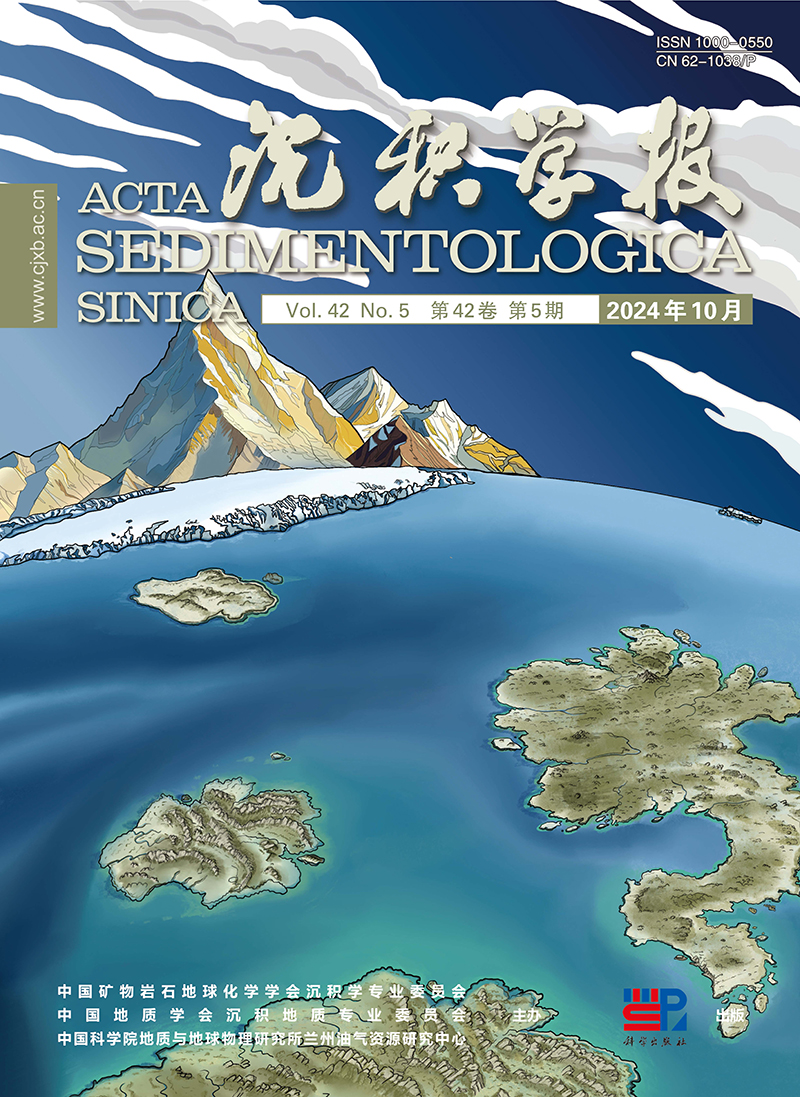


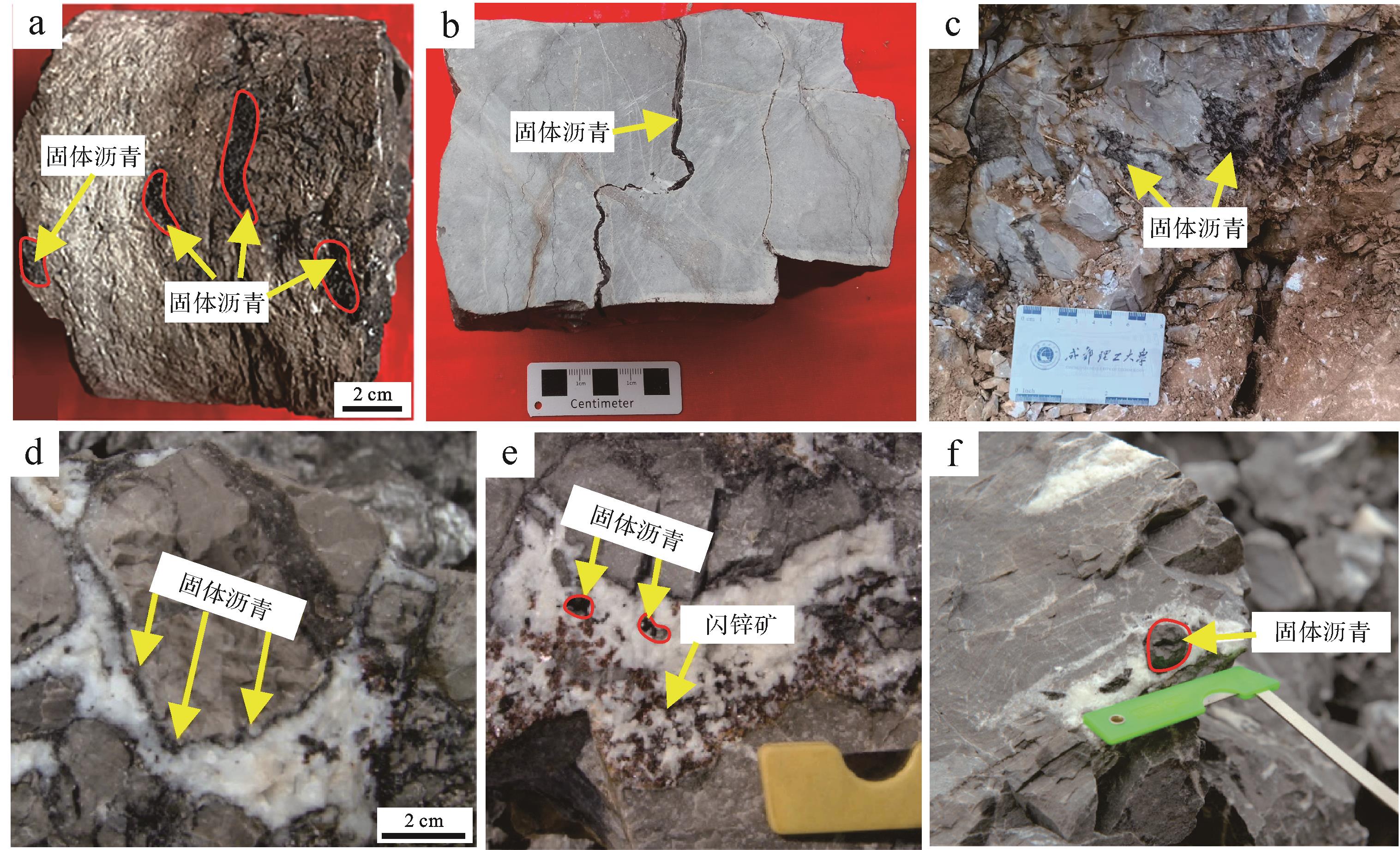







 DownLoad:
DownLoad:
